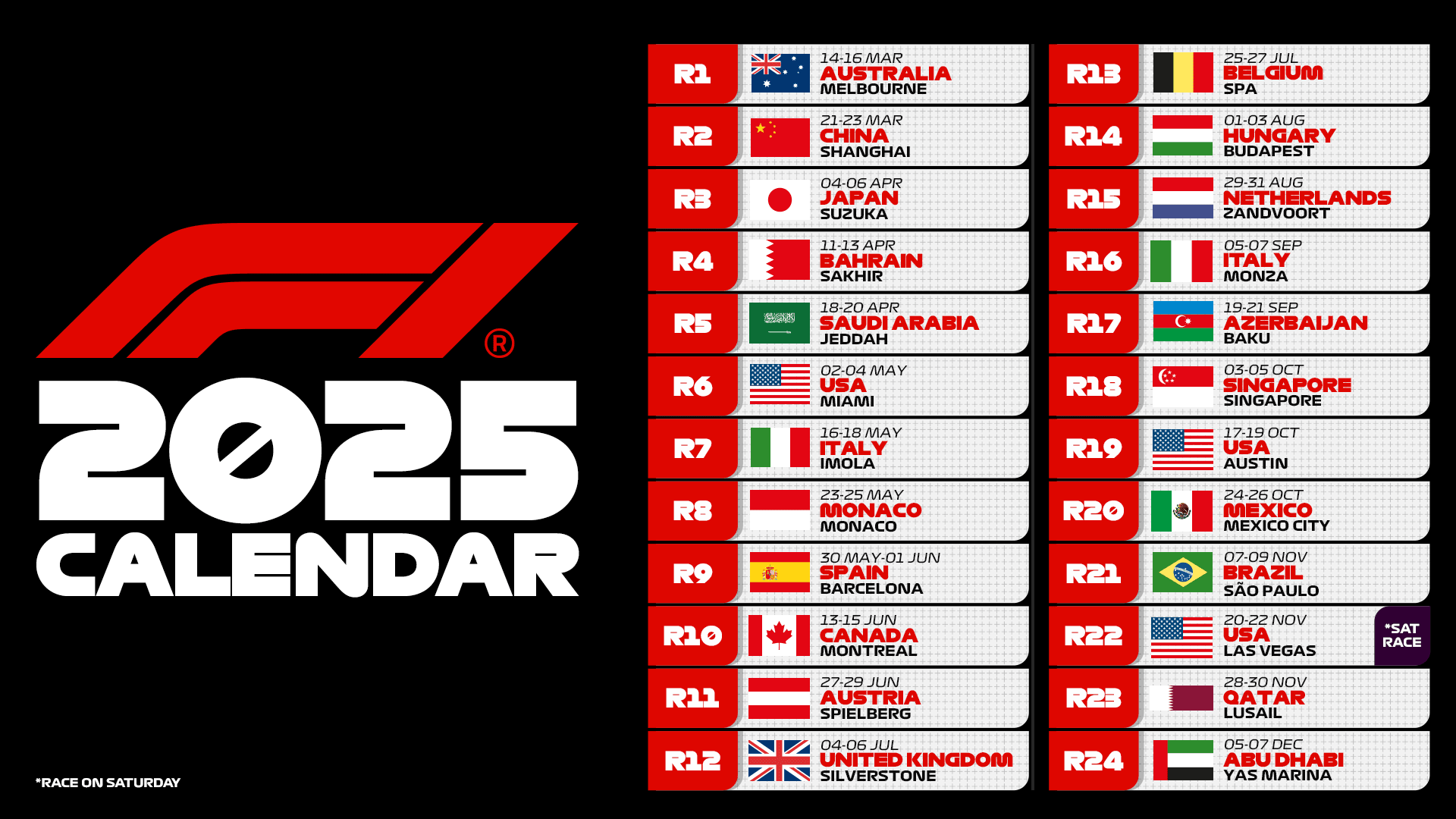
Ferrari has once again fallen short in the 2023 season, marked by Max Verstappen’s record-breaking performances. From the first Grand Prix, Red Bull has been towering over its rivals, with the Dutchman dominating extensively, leaving only crumbs for opponents, especially teammate Sergio Perez. Much praise and analysis have been dedicated to narrating this domination, but it can also be interesting to focus on the numbers.
A few clarifications are necessary: the presented data is sourced from F1’s live timing service. Tables and graphs are created by the undersigned and shared on the Instagram profile @howf1works. Let’s start with some statistics: Red Bull achieved 21 victories out of 22, embellished by another 5 wins out of 6 in sprint races. Considering the win percentage for the season, the RB19 recorded a staggering 95.45%, surpassing the historical record of the McLaren MP4-4 from 1988, which stood at 93.75%.
It should be noted that, in the case of the Milton Keynes team, the greater number of races helps diminish the specific weight of each individual event… just to clarify, Sainz’s success in Singapore is “only” worth 4.54%, compared to the 6.25% of any Grand Prix in 1988. That’s why, with the same number of races not won (1), Red Bull still has a better percentage than McLaren. Of the twenty-one triumphs, 19 bear Max’s name, with only 2 for Checo, gathered in the first four races of the season.
Verstappen’s winning streak from Japan to Abu Dhabi sets a new record, surpassing Vettel’s nine consecutive victories in 2013. The German is overtaken by the Dutchman in the all-time victory ranking, with Max now third with 54 victories to Seb’s 53. Other notable records include Verstappen completing 1003 laps in the lead, overtaking Sebastian, who held the record since 2011, and his 575 points, equivalent to 92.75% of those available.
F1 2023/Qualifying Analysis: Verstappen the Fastest, Leclerc Keeps Pace with his Ferrari SF-23
Let’s now focus on the qualifying sessions, both from the perspective of individual drivers and teams. There are few doubts that, on average, Verstappen was the fastest, given his 15 pole positions (including sprint shootouts). However, the second spot for the role of “best qualifier” holds surprises: Charles Leclerc proves to be a dry lap beast.
Despite the SF-23, the Monegasque secured four poles (Azerbaijan sprint + race, Austin race, and Las Vegas), making him the second-fastest on average, with a gap of around 0.447%. The percentage figure might be challenging to comprehend. It should be noted that, although it is an average indication of performance, it is a statistic stripped of some factors that typically impact gaps in qualifying.
Show your support for Scuderia Ferrari with official merchandise collection! Click here to enter the F1 online Store and shop securely! And also get your F1 tickets for every race with VIP hospitality and unparalleled insider access. Click here for the best offers to support Charles and Lewis from the track!
For example, on long circuits like Spa, with higher lap times, the gaps will automatically be greater, while in Monaco, they will be very tight. In this regard, the %Δ (percentage delta) helps regardless of these anomalies.
Show your support for Scuderia Ferrari with official merchandise collection! Click here to enter the F1 online Store and shop securely! And also get your F1 tickets for every race with VIP hospitality and unparalleled insider access. Click here for the best offers to support Charles and Carlos from the track!
The 2023 season falls short for Perez: the Mexican managed to triumph only twice, in Jeddah and Miami, while often being excluded from Q3 and occasionally even from Q2. His average gap from Max hovers around 0.785%, with few fluctuations throughout the Grand Prix. If we were to create an ideal grid where drivers are ordered by their delay from Verstappen, Checo would position himself 4th, even behind Carlos Sainz’s Ferrari.
| Driver | % Gap to VER | Driver | % Gap to VER | Driver | % Gap to VER | Driver | % Gap to VER |
| SAINZ | 0,649 | ALONSO | 0,974 | GASLY | 1,478 | LAWSON | 1,890 |
| PEREZ | 0,738 | PIASTRI | 1,201 | ALBON | 1,520 | ZHOU | 2,142 |
| NORRIS | 0,752 | OCON | 1,409 | STROLL | 1,769 | SARGEANT | 2,201 |
| HAMILTON | 0,785 | HULKENBERG | 1,451 | BOTTAS | 1,796 | MAGNUSSEN | 2,211 |
| RUSSELL | 0,918 | RICCIARDO | 1,472 | TSUNODA | 1,835 | DE VRIES | 2,799 |
Qualifying data also provides an insight into how different teams alternated for the title of “best of the rest” behind Red Bull: Aston Martin, Ferrari, and Mercedes had similar performances, with some notable highlights, such as Alonso’s front row in Monaco or Lewis’ pole in Budapest, along with Charles’ previously mentioned poles in Baku. McLaren lags behind, as we know, having run the first half of the season with a car far from what we got used to from the summer onwards.
Both with Lando and Piastri, the Woking-based team posted interesting performances in the second half of the season, occasionally playing the role of an anti-Red Bull. The confirmation also comes through the numbers: Norris, along with Leclerc, was the closest to the Dutch champion, with a percentage delay of 0.331% from Zandvoort to Abu Dhabi (Leclerc, for context, records a +0.317% in the same period).
In the midfield, Hulkenberg surprises, showing great qualifying speed with his Haas, reaching Q3 in 10 occasions. On average, Nico suffered a gap of 1.451%, significantly higher than Magnussen’s 2.211%. Albon confirms himself as a heavy-footed driver, finishing in the top 10 nine times and running, on average, 1.520% slower than Max. Also noteworthy is the difference with his teammate: the gap to Sargeant stands at 2.201%.

Source: FUnoanalisitecnica
Alfa Romeo disappoints, with Bottas and Zhou trailing behind, at 1.796% and 2.142%, respectively, while Tsunoda, Ricciardo, and Lawson are very close, with just 0.3 percentage points separating them. On the absolute lap, the slowest was Nick De Vries, who, in the ten races before being sidelined, totaled an average delay of 2.799%. Among the drivers who completed the entire season, Kevin Magnussen was on average the slowest.
F1 2023/Race Pace Analysis: Ferrari Struggles and the Gap Widens to Red Bull: Perez Climbs
Let’s move on to the analysis of performances during the race: it is well known that the RB19 was designed to make a difference in the long run, rather than in a single lap, and it is reasonable to expect that the gaps described in the previous paragraph can only increase. Indeed, this is the trend: at least in the Grands Prix, Sergio Perez confirms himself as the second fastest behind the unbeatable Max.
The Mexican’s gap is 0.583%, which may not seem like much, but it equates to almost thirty seconds of separation in a 50-lap Grand Prix! Behind Perez, a group of drivers very close to each other emerges, led by Charles Leclerc and then composed, in order, of Hamilton, Norris, Sainz, and Russell.
| Driver | % Gap to VER | Driver | % Gap to VER | Driver | % Gap to VER | Driver | % Gap to VER |
| LECLERC | 0,837 | ALONSO | 1,124 | RICCIARDO | 1,610 | SARGEANT | 2,055 |
| HAMILTON | 0,894 | GASLY | 1,397 | ALBON | 1,763 | DE VRIES | 2,086 |
| NORRIS | 0,931 | OCON | 1,506 | TSUNODA | 1,882 | MAGNUSSEN | 2,101 |
| SAINZ | 0,968 | PIASTRI | 1,523 | HULKENBERG | 1,986 | LAWSON | 2,163 |
| RUSSELL | 1,028 | STROLL | 1,555 | ZHOU | 1,991 | BOTTAS | 2,244 |
The extreme numerical compactness of Ferrari, Mercedes, and McLaren drivers is a worthy representation of what we’ve seen this season: Red Bull making a clear break, the second (Mercedes) coming second if everything goes smoothly, and then a fierce battle for the lowest step of the podium. Scrolling further back, Alonso remains below the 1.5% gap, thanks to masterpieces in Zandvoort and Sao Paulo. For the rest, with Aston Martin progressively declining in the second half of the season, it’s no surprise to evaluate the statistical outcomes.
Gasly leads the midfield group. Often overlooked is what the Frenchman accomplished with his Alpine, but his consistency and pace don’t escape our charts. Pierre also turns out to be faster on average than his teammate, Ocon, and Piastri’s McLaren. It should be noted that the first part of the season for the Australian rookie was influenced by an uncompetitive car. While in the second half, Oscar struggled on unfamiliar circuits like Austin or Singapore.
This does not diminish the excellent season for the class of 2001, who also achieved the satisfaction of clinching the first podium on an elite track like Suzuka. Stroll and Ricciardo follow, both having unimpressive seasons, marked by difficult periods (especially for Lance) and few collected satisfactions. Among these are the Canadian’s fifth place in Brazil and Daniel’s great weekend in Mexico.
Alex Albon surprises by often managing to maintain his qualifying performances, collecting almost all of Williams’ seasonal points. His +1.763% places him closer to Alpine and Aston Martin than to direct rivals of the Enstone-based team, such as Haas and Alfa Romeo. In terms of performance, Alex ensured a seventh place in the constructors’ standings that is golden for James Vowles’ team. It may seem that Sargeant’s limited contribution in terms of points indicates his lack of competitiveness.
However, looking at the average performances of the American, they don’t fare that much worse compared to his teammate. His 2.055% puts him ahead of the aforementioned rival teams. Unlike Williams, Haas was unable, for almost the entire season, to translate excellent qualifying performances into meaningful placements.
Clear issues related to tire management made the VF-23 simply unsuitable for long stints. Within a few laps, the performance increased so much that Hulkenberg and Magnussen sank to the bottom of the standings. Confirmation is found in the numbers, as the %Δ hovers around 2%.
Worse than the American team is only Alfa Romeo: slow, inconsistent, and disappointing. What is surprising is that the slowest on the grid is Valtteri Bottas, with a gap of 2.244%. Zhou (+1.991%) at least keeps pace with the Haas duo and Sargeant, while the Finn, by a distance, closes the standings, even finishing behind the rejected Nick De Vries (+2.086%). Let’s leave some time for the data relating to AlphaTauri drivers, except for Yuki Tsunoda (+1.986%).
De Vries, Lawson, and Ricciardo have alternated the seat, with the Dutchman completing a maximum of 10 race weekends. All three have not completed enough Grand Prix to validate the data related to their performances. The percentages of their gaps from Verstappen are, thus, of little significance. For completeness and consistency, they are still reported.
Source: Andrea Mauri for FUnoanalisitecnica












.png)

Leave a Reply